There are few who can maintain a serious studio practice while supporting other area artists via directing an outlet for experimentation. This partitioned approach to one’s profession is a lofty task. Here, there are curatorial, financial, and time commitments that can create setbacks for one’s personal inquiry. Mia Capodilupo is that rare breed, sculptor and gallery director. Simultaneously, she crafts 3D found object into unified visual experiences for the public domain and directs West Humboldt Park’s Ignition Project Space. This week The COMP Magazine took the #65 Grand Avenue bus over to Capodilupo’s studio to discuss her youth out in Boston, why she returned to Chicago, some predecessor’s who have offered influence, proper practices of dumpster diving, and why Ignition Project Space is well worth the effort.

You have lived in Chicago on a couple of occasions (during your undergrad studies at the University of Chicago, then you returned after completing an MFA in San Francisco) but grew up in Boston. Can we rewind and discuss your early introduction to the visual arts? Specifically, are there any events or people you see as assisting you in identifying sculpture and the visual arts as an area you wanted to devote your life?
I grew up in an artistic family, my parents were both actors on and off Broadway in New York. I always gravitated towards visual arts, but studied more academic fields until I got to college at the University of Chicago. Visiting museums and seeing exhibitions by Alberto Giacometti, Martin Puryear, Richard Serra, Kiki Smith, Duane Hansen and others inspired me to start working with sculptural materials.
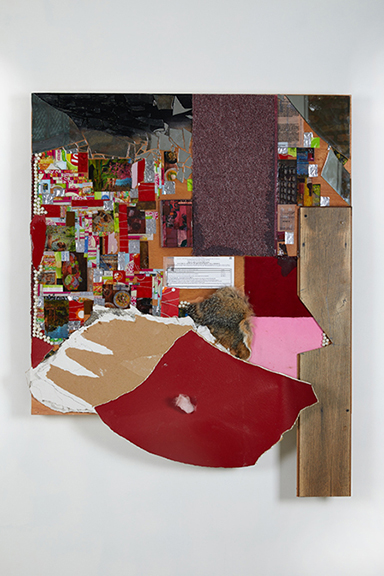
In discussion, you noted a fascination with a handful of artists from the 1970s-90s. A couple, Robert Rauschenberg and Lee Bontecou often worked with found/reusable or nontraditional artmaking materials. Can you discuss what drew you to these types of artists and how they may inform your aesthetic practice?
I have lived in various cities my whole life and being surrounded by advertising, manufacturing, demolitions and building, I was always interested in products, cast-off objects and the industrial landscape. From the very beginning of my practice I was interested in giving these objects a second life as artworks. I also gravitate towards the combination of textures. I always found it striking and interesting to be confronted by objects out of the usual context I was used to seeing them in.
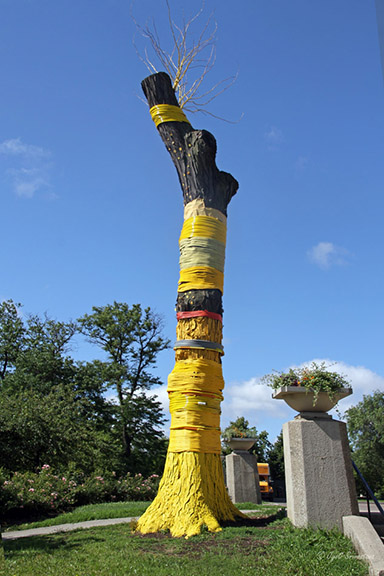
Having worked with materials retrieved during ‘dumpster-diving’ excursions, there’s an interesting recontextualization that can occur. You used the term ‘rescued’ when noting your collecting process. Can you discuss your application? Do you seek out specific items? Is there an element of randomness?
There is definitely an element of randomness, one great thing in the city of Chicago is the alley system, which makes it easy to cruise around finding random objects. Sometimes I do need specific objects, such as when I did the tire installations, I needed specific size tires and with the tree pieces I needed specific colors of hoses. In those cases I seek out sources rather than foraging. I do feel that it is rescuing objects in certain cases, they would most likely be added to landfills or end up in our waterways. It is an interesting phenomenon that taking them out of the category of “trash” and making them “art” suddenly adds value and attention.
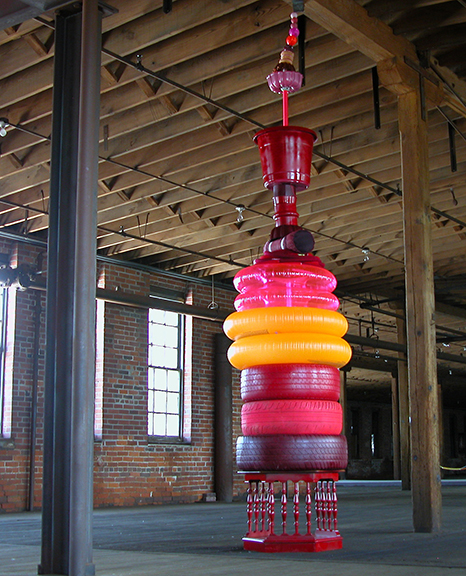
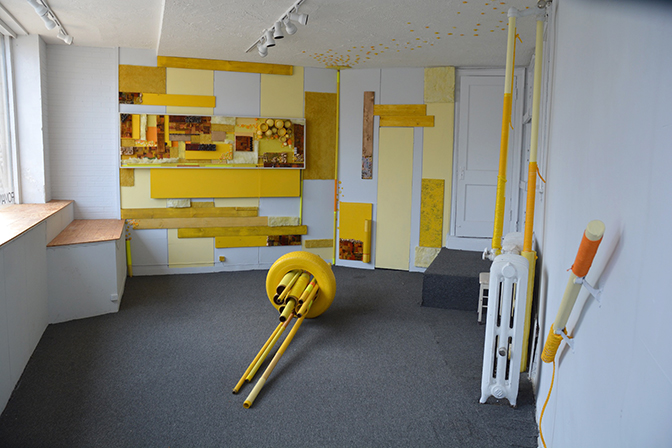
Much of your output is designed for the public domain. I am initially drawn to the Burst series (2014-present) that is part of your Chicago Tree Project. When working in high trafficked areas, do you maintain a consistent approach from site to site? What are some of the considerations you see effecting your process and application?
For the Burst tree, I was working with the City of Chicago, so there were more constraints on the process in terms of safety and keeping a safe perimeter where I was working. Ordinarily I don’t work with such large scaffolding so I encourage people to approach me and see what I am doing up close.
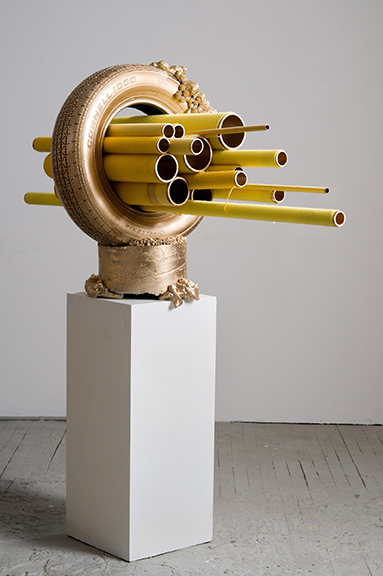
Can you share thoughts on how you see the formal (physical appearance) and conceptual (ideas and intent) elements intersecting in your sculptures and 3-dimensional artworks?
They are equal, because I have concepts that I always work with, but then there is an element of discovery and play. I often find objects or processes that I’m inspired by, and incorporate them into my concept – if I sketch out an idea at the beginning it usually changes when I start working with the materials.
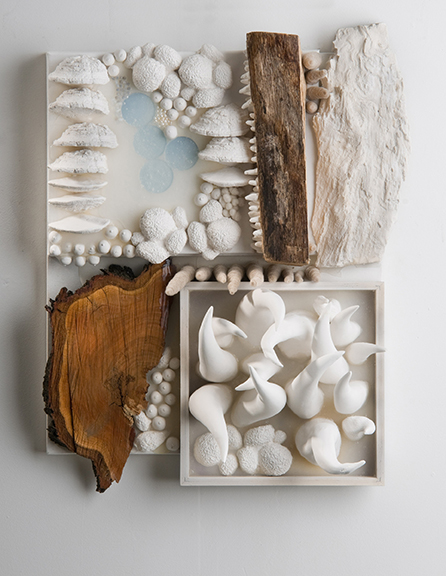
What do you value most in your aesthetic practice?
I value experimentation, combination of different textures, materiality, use of consumer culture and the concept of value, ideas of income disparities and the complex landscape of a city environment.
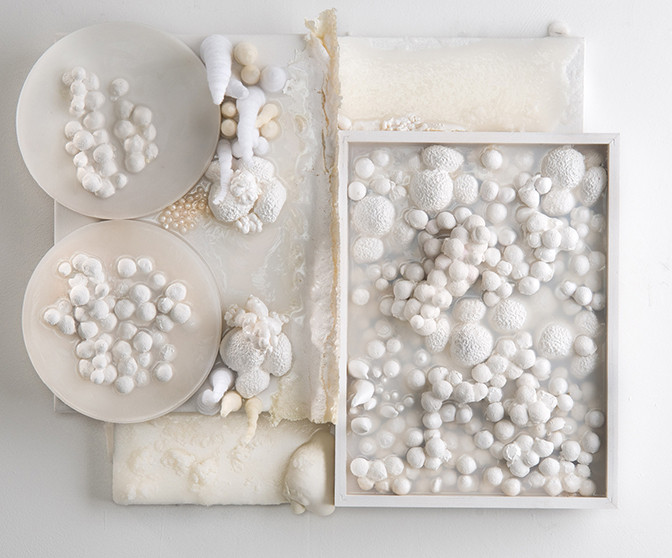
In addition to your studio practice, you direct Ignition Project Space in Humboldt Park. This is a grassroots experimental site that promotes ‘risk-taking’ for a wide range of artists. What prompted this effort? What do you find most engaging in the creation of this platform.
I was interested in engaging with the art community in a different way and also wanted to create a space that didn’t have any of the constraints that bothered me while exhibiting in other spaces. I also wanted to create a space without any of the financial pressure usually present in a gallery space, where people could work out concepts or present new work, because those types of spaces were always my favorite to show in as an artist. The concept of curators and dealers having to rein in and package wild artists has always bothered me because artists are the life blood of the art world. I try to make my space artist-centric rather than curator or gallery owner-centric. I wanted to create a window space as part of the gallery because many people don’t feel welcome in a gallery space but still enjoy and have a deep understanding of art, so it is a way to reach people outside a traditional art viewing audience.
To me, the best part of Ignition projects is the connections I have made with artists, other nonprofits and collaborators, and the excitement of the Chicago community about the space.
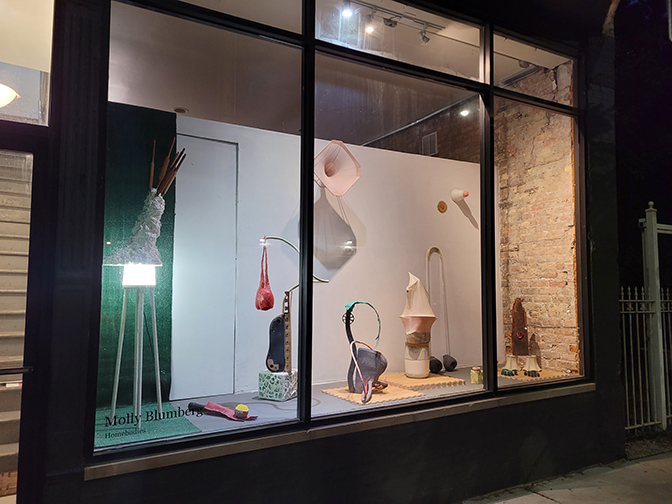
What are you currently working upon? Do you have any items you hope to complete by year’s end? What are your thoughts for 2023?
I am working on more wall collage pieces with cast parts of nature and also getting back into public art. At Ignition, I am making a special effort to present more video, sound and new media work since we have had very few artists present that type of work. I am also trying to develop our outdoor courtyard to present more sculpture and installation.
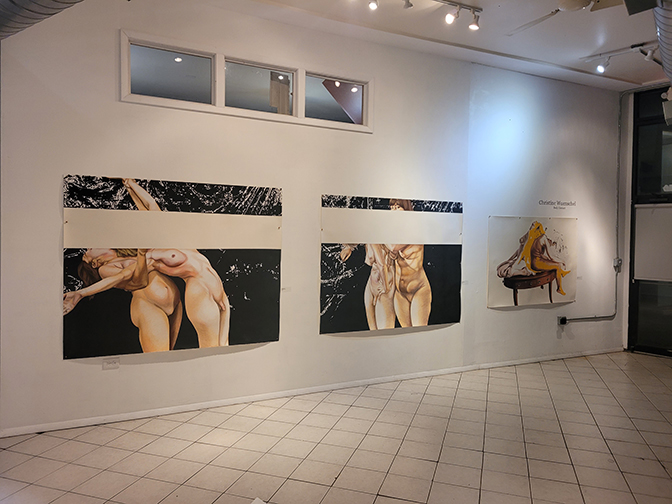
For additional information on the aesthetic practice of Mia Capodilupo, and Ignition Project Space, please visit:
Mia Capodilupo – http://www.miacapo.xyz
Chicago Tree Project – https://www.chicagotreeproject.org/trees-2/mia-capodiluppo/
Woman Made Gallery – https://womanmade.org/artwork/mia-capodilupo/
ChaShaMa – https://chashama.org/feat-artist/mia-capodilupo/
Ignition Project Space – https://www.ignitionprojects.org
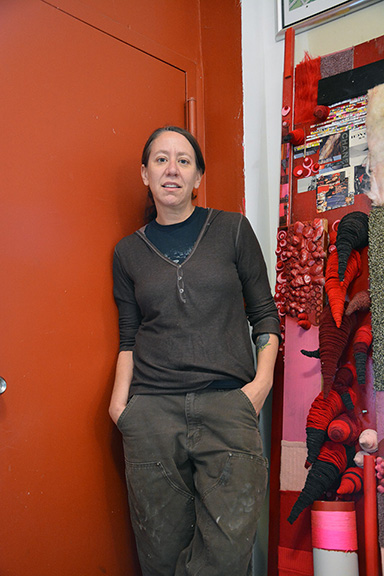
Artist interview and portrait by Chester Alamo-Costello


